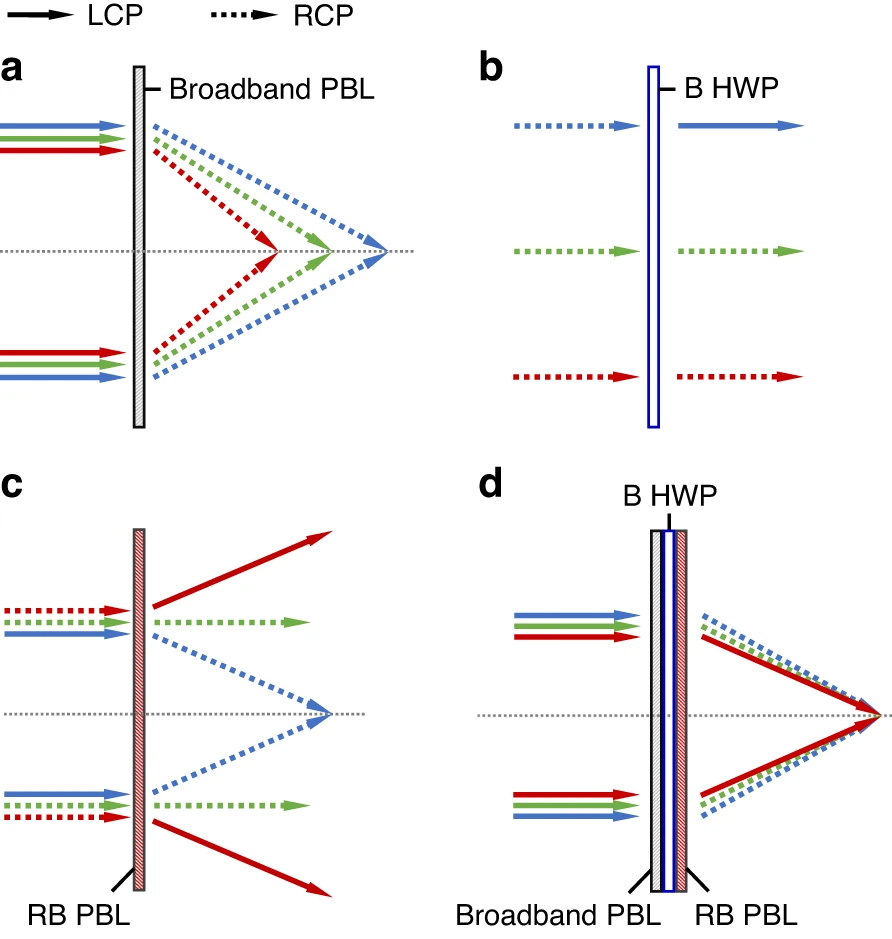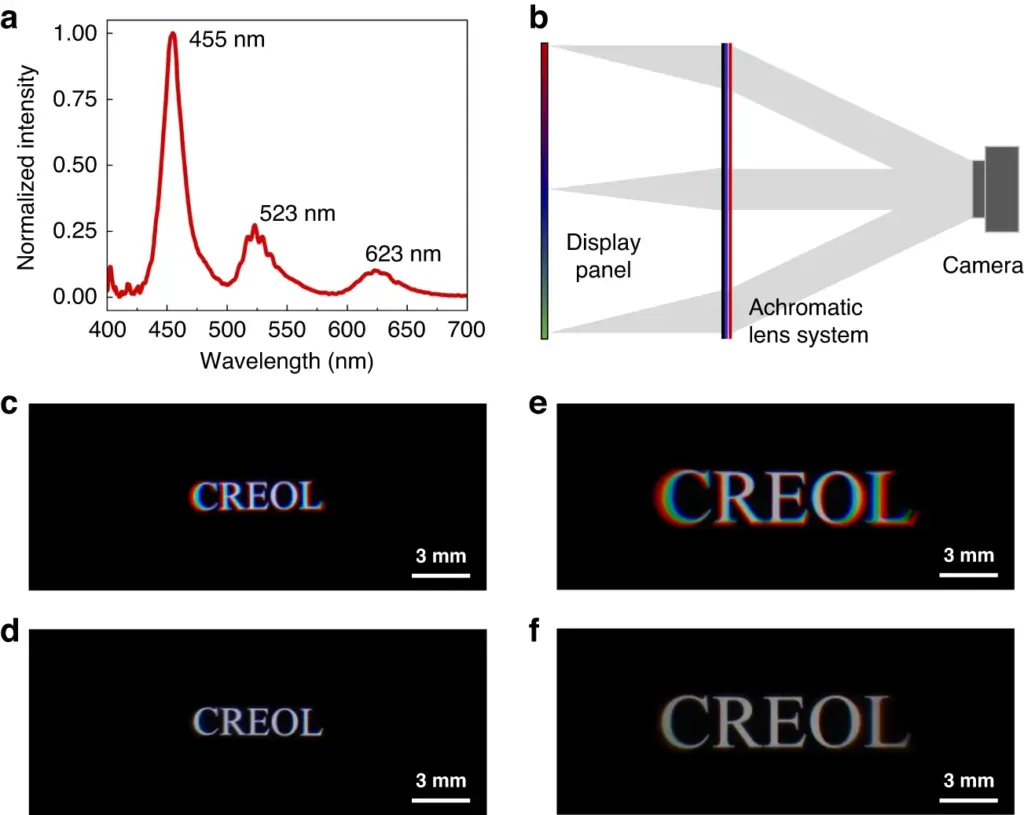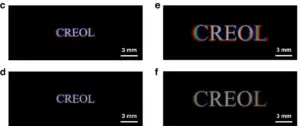Interesting new research from the College of Optics and Photonics, University of Central Florida, proposes a novel approach to create achromatic diffractive liquid crystal optics that can correct color dispersion. The demonstrated solution with both laser projector and OLED, reduces color shift by about 100x versus regular diffractive lens.

Diffractive optics like liquid crystal lenses can be very thin but suffer from chromatic aberration that causes different colors to focus at different points. The proposed solution uses three stacked diffractive liquid crystal elements – a broadband lens, blue half-wave plate, and red/blue lens.
Each element is designed with specific polarization selectivity and spectral response to provide tailored diffraction for red, green and blue wavelengths. The broadband lens gives overall optical power but has dispersion. The half-wave plate switches only blue polarization. The red/blue lens counteracts dispersion. Together this provides achromatic performance – all colors focus to the same point – while maintaining a thin, lightweight form factor.

Eliminating chromatic aberration removes a major barrier for using diffractive optics in full-color displays and imaging systems. It enables thinner, lighter weight optics compared to bulky refractive lenses with cementing.It also allows panoramic, high resolution MR/AR displays opening up new possibilities for compact optical components in imaging, beam steering, augmented reality.
Reference
Luo, Z., Li, Y., Semmen, J. et al. Achromatic diffractive liquid-crystal optics for virtual reality displays. Light Sci Appl 12, 230 (2023). https://doi.org/10.1038/s41377-023-01254-8

